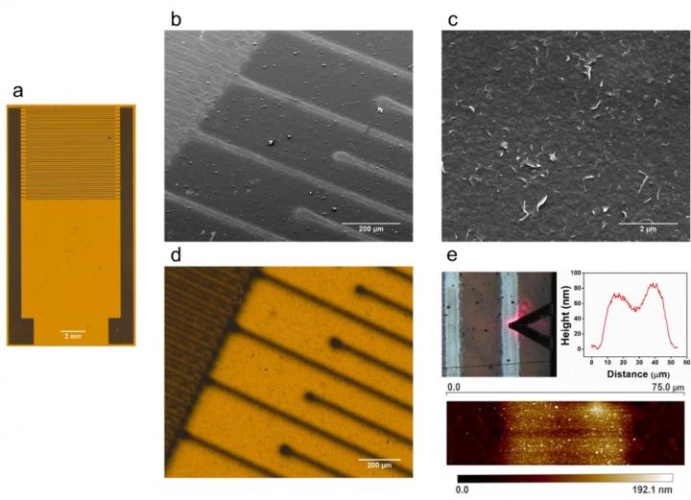During trials on a sample of tuna broth the sensor – which is produced by depositing graphene electrodes on flexible polymer - was used to detect minute levels of histamine (as low as 3.41 parts per million) which is an allergen and indicator of spoiled fish and meat.

A paper on the work in the journal 2D Materials describes how the graphene electrodes were aerosol jet printed on a flexible polymer and then converted to histamine sensors by chemically binding histamine antibodies to the graphene. The histamine blocks electron transfer and increases electrical resistance, which can be measured and recorded by the sensor.
Graphene garments regulate body temperature
ESA demonstrates graphene solar sails
Jonathan Claussen, an associate professor of mechanical engineering at Iowa State University and one of the leaders of the research project, said that the study has demonstrated that aerosol-jet printing is precise enough to create the high-resolution electrodes required for such an application. "The closer we can print these electrode fingers, in general, the higher the sensitivity of these biosensors,” he said.
The researchers claim that the technology could be used for a range of sensing applications including environmental toxin detection, foodborne pathogen detection, wearable health monitoring, and health diagnostics. For example, by switching the antibodies bonded to the printed sensors, they could detect salmonella bacteria, or cancers or animal diseases such as avian influenza, the researchers wrote. Indeed, the group has already demonstrated broader application of the technology by modifying the aerosol-jet-printed sensors to detect cytokines, or markers of inflammation.




Plasma technique converts landfill methane to jet fuel
Trevor; there are still many landfill sites in the UK where the methane is not captured but not only that, where there is protein waste in them, they...